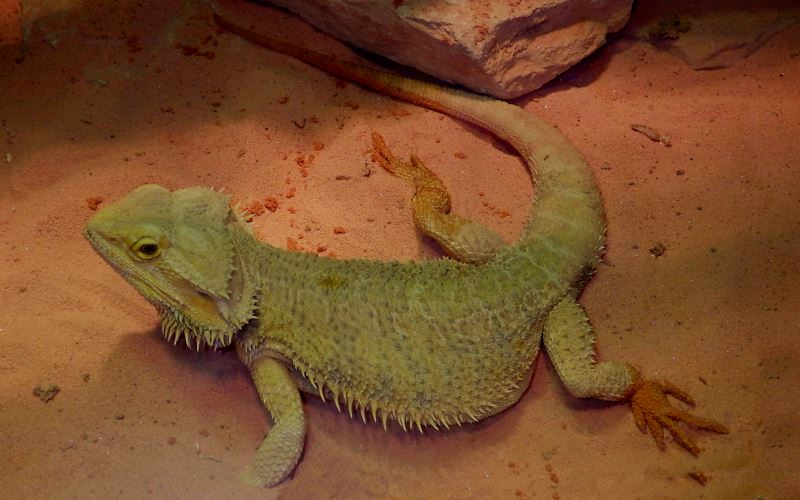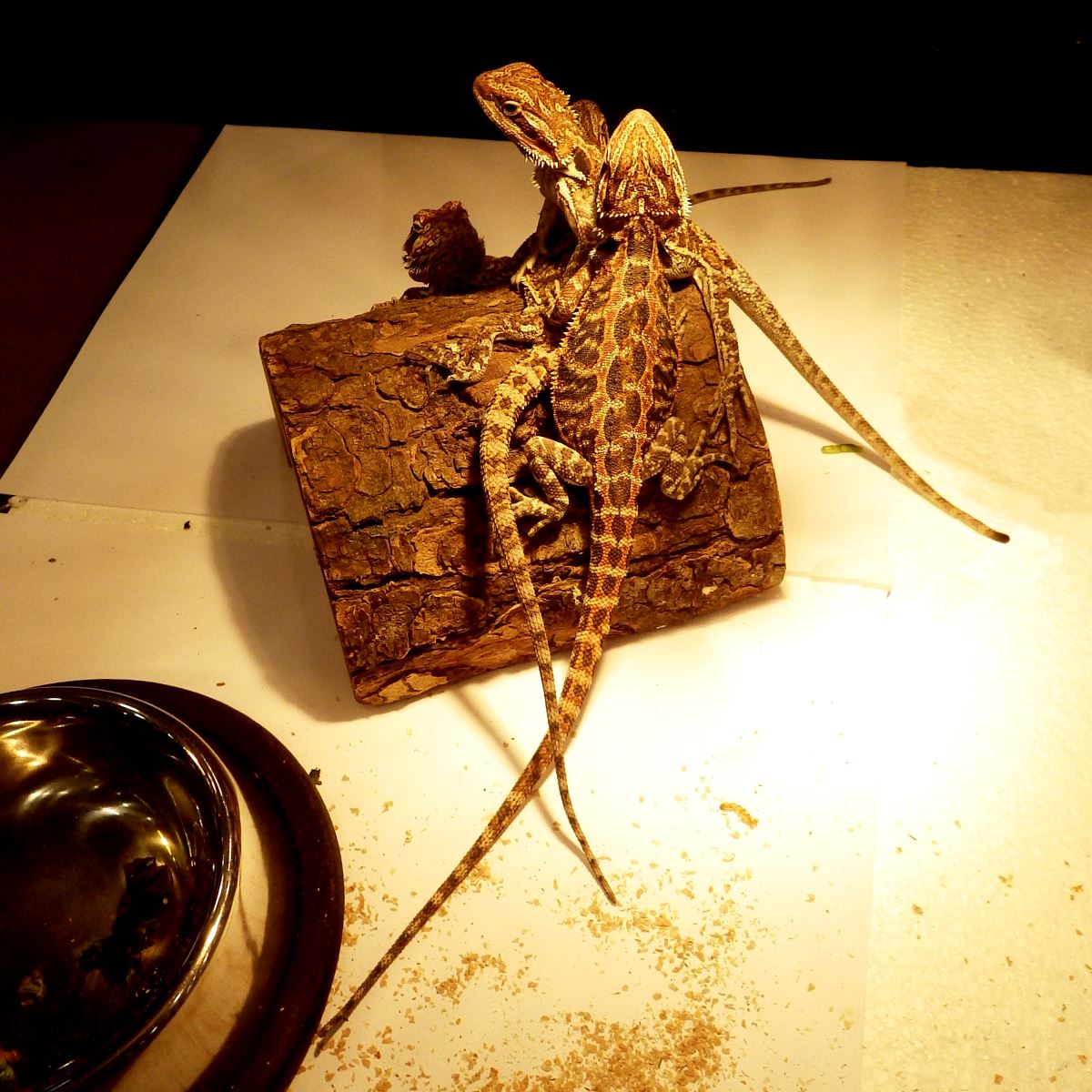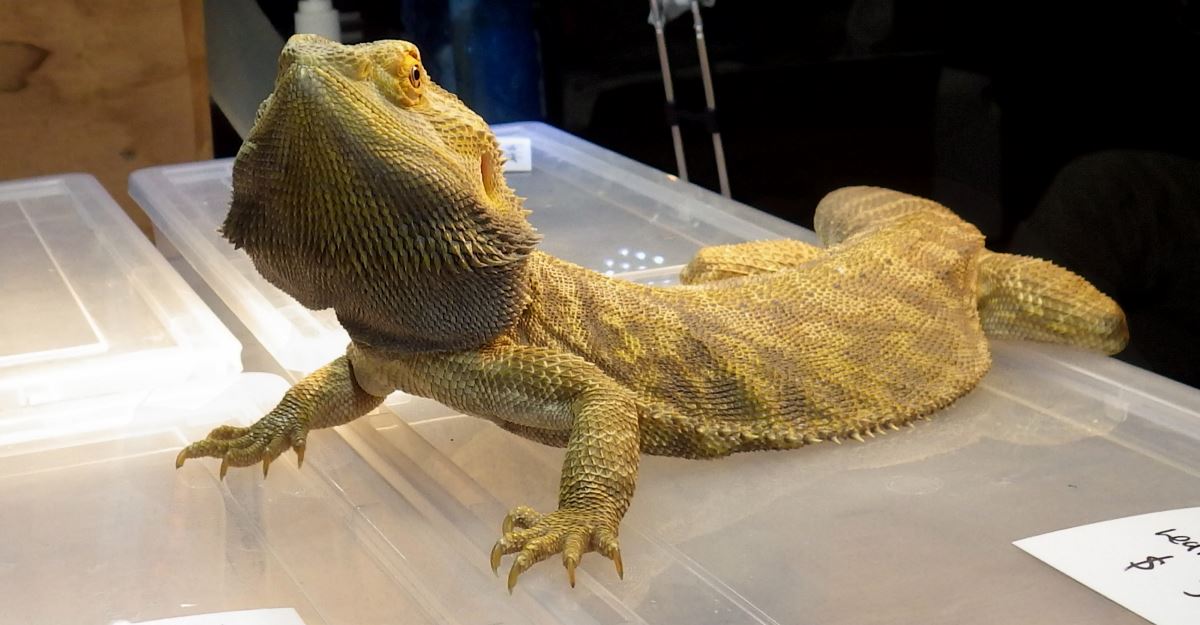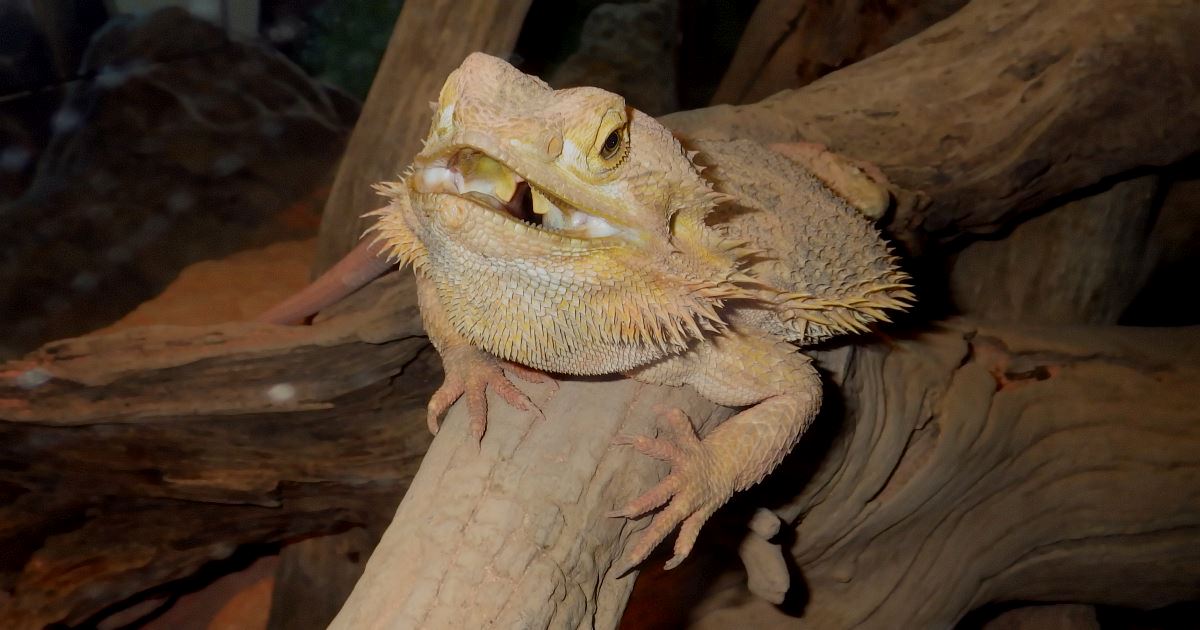Bearded dragon is the common name of the lizards in the genus Pogona, especially in the pet trade.

Central bearded dragon (Pogona vitticeps) in the Toronto Zoo.
Bearded dragons are native to Australia and in their native habitat they live in a desert environment under very strong, hot sunlight and lots of UV radiation.
Bearded dragons are popular pets and many captive bread color morphs are available.
It is now illegal to take bearded dragons from the wild in their native Australia, but they breed readily in captivity and bearded dragons seem to be on their way to become domesticated since captive bread and wild populations are no longer allowed to breed with each other.

While bearded dragons have a lot of teeth and can inflict even serious bites, captive bred pet specimens rarely attack or bite humans. If you are considering a bearded dragon as a pet check first and pick one that behaves nice with you. Just use common sense the same way as you would pick a new dog. Among reptilian pets bearded dragons are one of the most interactive so you want one whose personality matches yours.
As pets they tend to be calm, tame and actually like to socialize with humans to some degree. A common opinion is that they make wonderful “shoulder pets” since they are willing to sit on a person’s shoulder for extended periods of time. In many ways bearded dragons are one of the few reptiles that interact with humans in a manner usually expected only from mammals or birds, and they are suitable for more hands on pet owners. Bearded dragons are also likely to provide tons of fun and entertain their owners with their antics.
As most lizards, adult bearded dragons need to eat their greens, but they mostly eat insects. Bearded dragons will occasionally eat larger prey, including small vertebrates such as mice.
In captivity their needs are relatively modest, but they do need a desert-like setup with a basking spot with both heat and UVB lamps. Bearded dragons should not be kept in a cold environment and play time outside their cage should be limited if the room where they interact with humans is not sufficiently warm. Although they can tolerate somewhat colder temperatures (around 65F) at night, in the daytime they should have a basking spot of around 100F where they can get warm. Full spectrum lighting with UVB should be provided over the entire enclosure as bearded dragons are not very good at adsorbing vitamin D from food and need UVB light to produce it themselves, otherwise they cannot process calcium and get sick or die.

Bearded dragon at the Toronto Reptile Expo.
While many agree that bearded dragons make wonderful pets, and they are on their way to become fully domesticated, the average human living environment is still not enough to keep a bearded dragon healthy. So if you want a bearded dragon as a pet make sure that you can provide what they need including desert heat, strong light including UVB and appropriate food.
Further Readings:
Central bearded dragon on the Toronto Zoo website.
Bearded Dragon Care Sheet on BeardedDragon.org.
Bearded Dragon Care Sheet on reptilesmagazine.com.



